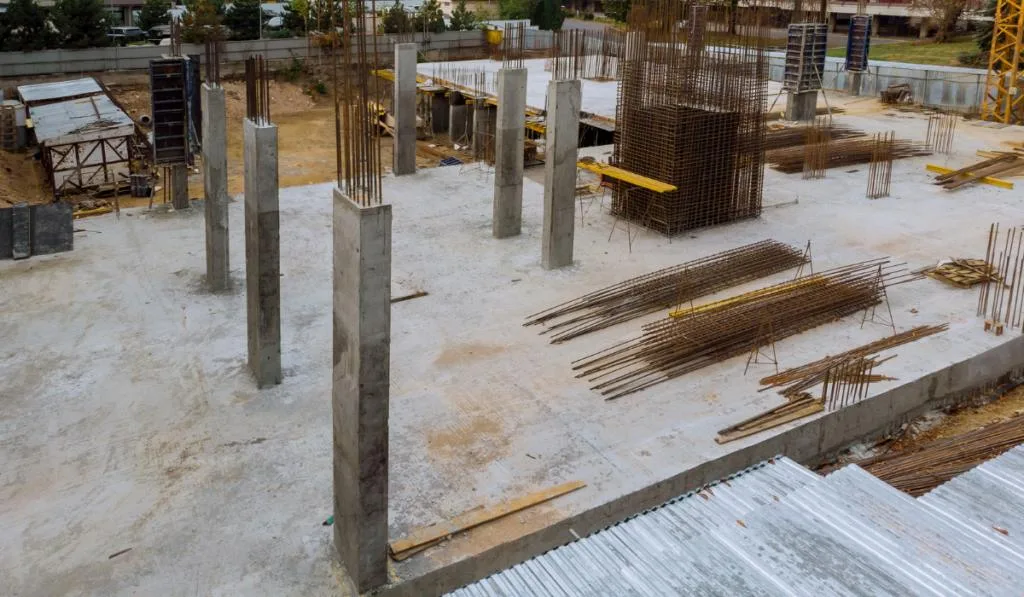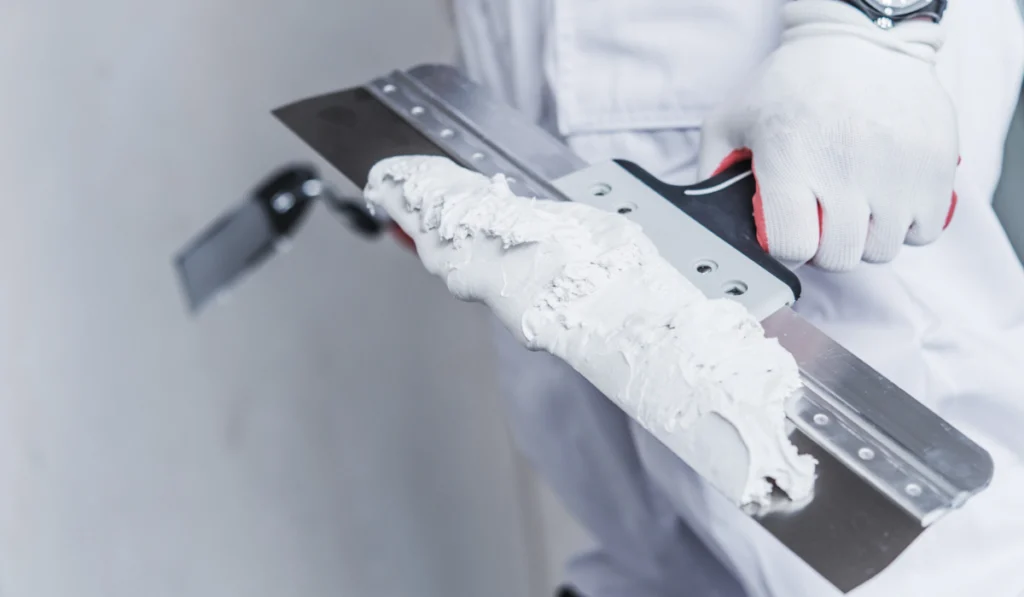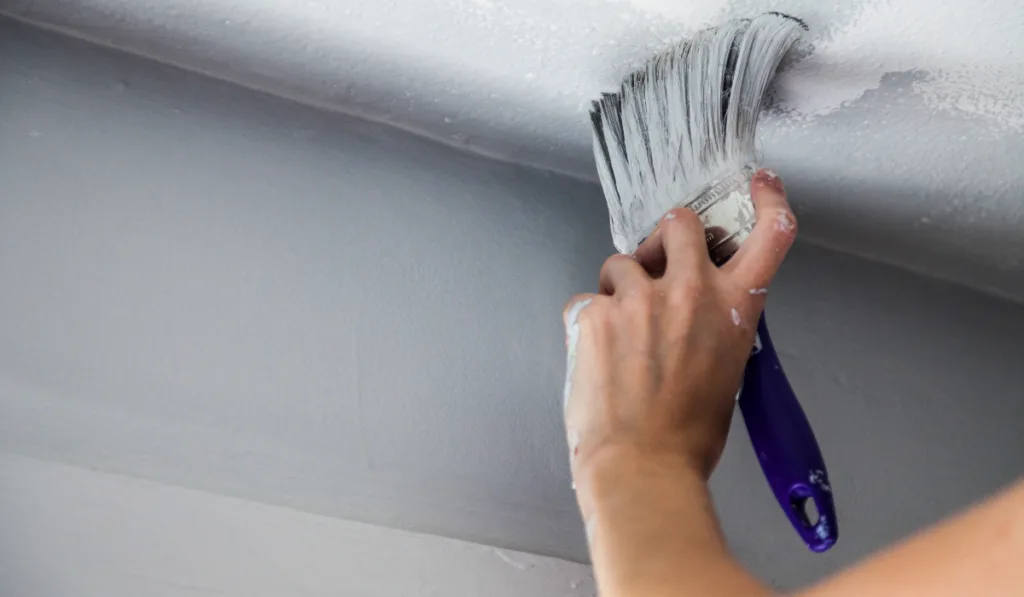*This post may have affiliate links, which means I may receive commissions if you choose to purchase through links I provide (at no extra cost to you). As an Amazon Associate, I earn from qualifying purchases. Please read my disclaimer for additional details.
A crack in any part of your building is a cause for concern, and you may not know how bad it is until you examine it.
One of the first few questions you may ask yourself while examining a structural crack is, “What caused this crack?” Once you have an answer, you are on your way to verifying if the crack is dangerous or not. Of course, detecting the cause can also help you find a way to fix it.
If you’ve recently noticed cracks in your vaulted ceilings, you may be wondering why those cracks are there. Well, we might have some answers for you. Below, we discuss 12 common reasons why vaulted ceilings crack.
Table of Contents
Aging

As houses age, they will undergo wear and tear like many other solid materials. The wear and tear will come from foundation settling, expansion and contraction, and various other phenomena.
As the various phenomena that can cause wear and tear occur in your home, they may create cracks in different areas. Such areas may include your vaulted ceiling, roof, floors, and walls.
If your vaulted ceiling has a crack because your house is old, the crack may or may not be dangerous. You will have to get a professional to assess the structural integrity. The professionals will let you know if the structure is weak or still strong. They will also advise you on the best steps to take.
Besides wear and tear, houses naturally undergo settling as they age. You could think of house settlement as your building adjusting itself on the foundation.
When a house settles, it may create cracks and crevices, which show in your vaulted ceiling. You have no reason to worry if the cracks are thin – say less than 1/8 inches.
You can just cover the cracks. However, if the cracks are large or recurrent, get a professional to assess the situation.
Building Material Shrinkage
Tiny cracks in vaulted ceilings are commonly caused by building material shrinkage. Building material shrinkage, in turn, is a result of severe, repeated changes in temperature and humidity.
When humidity is high, building materials become wetter. Then when the humidity drops and the temperature is high, building materials become dry.
Repeated cycles of drying and getting moist will eventually affect building material structure. When this happens, they will shrink.
As the building materials used in constructing your vaulted ceiling shrink, they pull away from each other. As they pull away, they will create space between each other, and this space will appear as a crack.
Foundation Flaws

Your vaulted ceiling may have cracks because your foundation has problems. One of such problems is foundation settling.
When a foundation is settling, it may put a lot of pressure on a building’s structure. Foundation settlement may put unnecessary pressure on the trusses, drywall, and frame above your ceiling. This pressure, in turn, will cause your ceiling sheet to sheer and consequently crack.
Cracks due to foundation settlement are usually large. When they happen, the ceiling may sag or bow. But besides that, the cracks may have a spiderweb pattern.
Vaulted ceiling cracks due to foundation settlement are typically significant. For this reason, you must detect them early enough to avert serious issues.
Cracks that form from foundation settlement sometimes run across the ceiling and right down a wall. They sometimes appear as an opening between a wall and the ceiling. If you notice any of these, reach out to a professional immediately. Such cracks signify extensive structural damage.
In some cases, foundation settlement may worsen a crack caused by something else. Basically, the initial crack did not come from the foundation settling. But when the foundation settled, it made the crack worse.
Truss Uplift
Ordinarily, the expansion and contraction of the wooden parts of trusses should only cause slight movements. But with extreme variations in humidity and temperature, the movements are more significant.
Significant truss movements lead to truss uplift, and when your trusses lift upward, they may pull the drywall along with it. Unfortunately, a crack will form in the middle of the ceiling and the wall when this happens.
To fix cracks caused by truss uplift, you need a professional. But if you choose not to get one, you may try concealing the crack.
Insufficient Drywall Mud

Various drywall installation issues may leave your vaulted ceiling riddled with cracks. One of them is not using enough drywall mud to tape the joints.
When you do not use enough drywall mud for the joint taping process, the drywall mud will have low adhesive power. In other words, when you do not apply enough drywall mud, the tape will not stick to the drywall as well as it should. Consequently, the drywall may show cracks.
The good news about drywall mud issues is that they typically do not signify structural damage. In other words, drywall mud issues are usually not dangerous. More often than not, they are merely minor errors that can be fixed quickly.
So, if your vaulted ceiling has a crack because of insufficient drywall mud, you may overlook the crack. But if the aesthetics bother you, you could apply a thin layer of drywall mud over the crack. This will reattach the drywall tape to the drywall, sealing the crack.
Repeated Exposure of Drywall Mud to Extreme Conditions
Besides insufficient drywall mud, repeated exposure of drywall mud to excessive humidity and temperature can cause vaulted ceiling cracks.
As we explained earlier, when building materials like drywall mud experience high humidity, they become moister. When they become moister, they expand somewhat.
Then when they experience high temperatures in moderate to low humidity, they lose moisture. And as they lose moisture, they shrink.
Recurrent exposure to excessive temperature and humidity will throw drywall mud into an expansion and contraction cycle.
Unfortunately, this cycle will promote wear and tear and cause the drywall mud to lose its stickiness. Of course, when the drywall mud is not as sticky as it should be, you may find cracks in your vaulted ceiling.

Vaulted ceiling cracks caused by drywall mud issues usually create hairline cracks. But in some cases – like when you do not apply enough drywall mud – the crack may appear as a straight line.
If you sense that humidity and temperature fluctuations might be responsible for your vaulted ceiling cracks, improve humidity and temperature conditions around the ceiling. This could be as simple as installing air conditioners and dehumidifiers if you do not have them already.
Without humidity and temperature control, any repairs you make to the crack will make no difference. You will most likely see the same cracks again after a while.
Drywall Mud Layer Too Thick
Besides the drywall mud issues we’ve mentioned above, your vaulted ceiling may also crack if the drywall mud layer is too thick.
Ceilings show cracks when drywall mud is too thick because of shrinkage while drying. A thick layer of drywall mud would be more viscous than a thin layer. So, it is more likely to crack when the drywall mud dries up.
Vaulted ceiling cracks caused by thick drywall mud typically appear as a spiderweb pattern.
If your vaulted ceiling shows cracks because of a thick drywall mud layer, you may overlook the crack since it is on the surface. Alternatively, you could lay a thin layer of drywall mud over the thick layer. You could also sand the thick drywall mud layer, then apply a new layer in its stead.
Too Thick or Multiple Layers of Ceiling Paint

As with the drywall mud, the crack in your vaulted ceiling may be because of your ceiling paint.
If you have multiple layers or thick layers of ceiling paint, you may notice cracks after some time. Such cracks form as a result of shrinkage. The shrinkage may be hastened by exposure to high temperatures.
Cracks caused by ceiling paint issues are generally superficial. In most cases, all you have to do is repaint the surface.
Inappropriate Painting Technique
Ceiling paint may crack if the painter does not use the appropriate painting techniques.
For instance, if the ceiling was not properly cleaned before painting, the chances of the paint cracking go up. Also, improper surface preparation may leave you with cracked ceiling paint.
Substandard or Expired Ceiling Paint
Another reason ceiling paint cracks is the use of substandard paint. This explains itself: ceiling paint will break or peel for sure if it is low-quality.
Also, if the paint has gone beyond its shelf life, its quality has most likely waned. In other words, expired paint may act exactly like low-quality paint.
Water Leakage

Another common reason why vaulted ceilings crack is water leakage. The water leakage may come from roof leaks or plumbing leaks. Whichever it is, you might be able to spot water leakage readily.
If you notice it early enough, ceiling cracks caused by a water leakage may still be moist. But apart from dampness, another sign you’d find is discoloration. If the cracks in your ceiling are yellowish or brownish, there is water leakage for sure.
Depending on the severity of the leakage, you may need the services of a professional. However, if the crack is minor, you may only need a repaint.
Substandard Materials
Besides low-quality paint, if the materials used in constructing your vaulted ceiling are substandard, the ceiling may crack. Of course, this is not too surprising since substandard materials cannot offer the same strength as high-quality materials.
If you suspect that the materials used to build your vaulted ceiling are low-quality, get a professional to assess the ceiling. Following the assessment, they should be able to advise you on the best course of action.
Resources
- https://www.bayareaunderpinning.com/are-ceiling-cracks-serious-causes-of-ceiling-cracks-and-when-to-worry
- https://www.bobvila.com/articles/cracks-in-ceiling/
- https://www.dalinghausconstruction.com/blog/why-do-i-have-cracks-in-my-ceiling-different-kinds-of-cracks
- https://trainedeye.ca/cracks-in-vaulted-ceiling/
